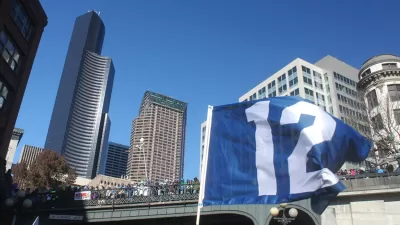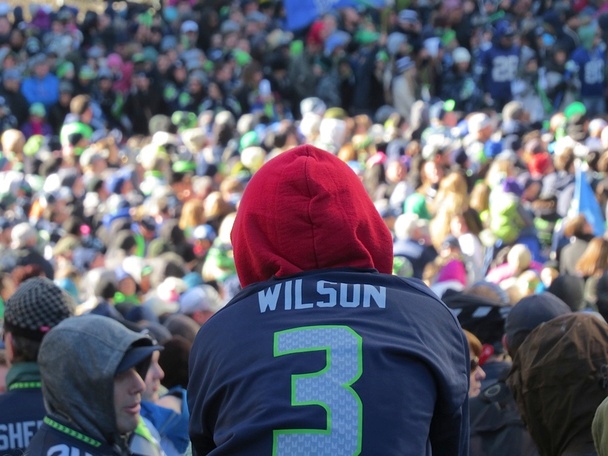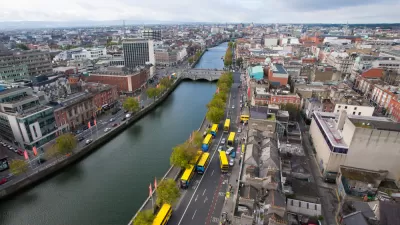Last Wednesday, an estimated 700,000—more than the city's population of 635,000—welcomed the Seahawks home, without major incident. Writing in The Atlantic Cities, Chuck Wolfe describes five lessons for placemaking through words and photographs.

 Wolfe provides an eyewitness summary of an event that brought an estimated 700,000 to downtown Seattle—more than the city's population of 635,000—without major incident.
Wolfe provides an eyewitness summary of an event that brought an estimated 700,000 to downtown Seattle—more than the city's population of 635,000—without major incident.
His thesis:
Efforts to create great urban places have a lot to learn from unifying regional events that cut across silos of culture, age, income, or neighborhood. Such events need not be limited to rebuilding after a superstorm or earthquake—they can be as simple and spontaneous as one city's celebration of its first-ever Super Bowl championship.
- Spontaneous, authentic "placemaking" with a purpose is often best.
- A robust, multimodal transportation network is key.
- A varied crowd of all ages makes a difference and can enhance a downtown core experience.
- One-time events can help crystallize potential alternative uses of urban spaces.
- We are more convertible than we think, and can avoid the politics and process that often inhibits great ideas.
He concludes with the optimism that ruled the day as a catalyst for urbanism going forward:
A center-city environment shared its spaces in the optimal fashion often sought by urban businesses, politicians, and residents, all without any of the usual endless debate and delay. For a day, I saw almost everyone happy, excited and with a common focus. Even if it was about professional football, that's really what good "urbanism" means.
FULL STORY: 5 'Placemaking' Lessons From Seattle's Amazing Super Bowl Parade

Study: Maui’s Plan to Convert Vacation Rentals to Long-Term Housing Could Cause Nearly $1 Billion Economic Loss
The plan would reduce visitor accommodation by 25,% resulting in 1,900 jobs lost.

North Texas Transit Leaders Tout Benefits of TOD for Growing Region
At a summit focused on transit-oriented development, policymakers discussed how North Texas’ expanded light rail system can serve as a tool for economic growth.

Why Should We Subsidize Public Transportation?
Many public transit agencies face financial stress due to rising costs, declining fare revenue, and declining subsidies. Transit advocates must provide a strong business case for increasing public transit funding.

How to Make US Trains Faster
Changes to boarding platforms and a switch to electric trains could improve U.S. passenger rail service without the added cost of high-speed rail.

Columbia’s Revitalized ‘Loop’ Is a Hub for Local Entrepreneurs
A focus on small businesses is helping a commercial corridor in Columbia, Missouri thrive.

Invasive Insect Threatens Minnesota’s Ash Forests
The Emerald Ash Borer is a rapidly spreading invasive pest threatening Minnesota’s ash trees, and homeowners are encouraged to plant diverse replacement species, avoid moving ash firewood, and monitor for signs of infestation.
Urban Design for Planners 1: Software Tools
This six-course series explores essential urban design concepts using open source software and equips planners with the tools they need to participate fully in the urban design process.
Planning for Universal Design
Learn the tools for implementing Universal Design in planning regulations.
City of Santa Clarita
Ascent Environmental
Institute for Housing and Urban Development Studies (IHS)
City of Grandview
Harvard GSD Executive Education
Toledo-Lucas County Plan Commissions
Salt Lake City
NYU Wagner Graduate School of Public Service



























